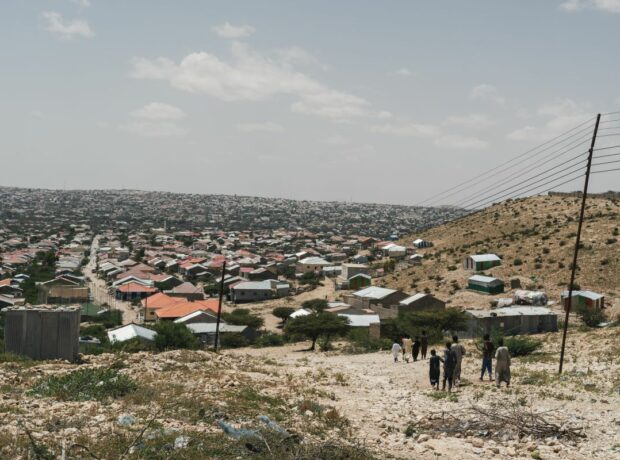What will we tell our grandchildren when they ask us why we failed to deal with climate change when we had the knowledge, the technologies, the funds and the opportunity to prevent catastrophe? Sam Adelman, an academic at Warwick University who teaches and researches on climate change, considers the momentous decisions faced by world leaders at the Convention on Climate Change in Paris this month. He sets them ten targets they should be looking to achieve.
Two Weeks
On 30th November, the 196 parties to the UN Convention on Climate Change (UNFCCC) will convene at the twenty-first Conference of the Parties (COP 21) in Paris to negotiate the future of the planet. The seemingly inexorable upward path of greenhouse gas emissions makes the two weeks during which the summit will run (30th November to 11th December) one of the most crucial periods in history.
If the conference succeeds, climate change could be mitigated as greenhouse gas emissions (primarily carbon dioxide) are reduced to levels that prevent average global temperature from increasing by more than 2 degrees Celsius over pre-industrial levels. If the summit fails, things will become nasty by the end of the century. Everybody will be affected, but the poor and the marginalised will be particularly vulnerable. Many human rights will be undermined, from the right to life – the precondition for other rights – to the rights to health, food and property.
To date, one hundred and fifty-five countries have unveiled their plans to cut emissions and strengthen resilience to climate change risks after 2020 – so-called Intended Nationally Determined Contributions – accounting for more than 86 per cent of global emissions. This makes the negotiations more transparent than in the past. But the problem, as Christiana Figueres (executive secretary of the UNFCCC) has pointed out, is that these commitments put us on a path towards the extremely dangerous warming of the planet by 2.7o C.
2015 is already set to be the hottest on record “by a country mile” according to the UK Met Office, indicating that anthropogenic global warming is likely to pass the milestone of 1o C of warming since pre-industrial times by the end of the year. This takes us into “uncharted territory.” The three warmest years on record were in the past five years – 2015, 2014 and 2010 – and nine of the 10 warmest years have occurred this century.
Global warming is inevitable because greenhouse gases remain in the atmosphere for tens to hundreds of years. But scientists are uncertain whether we have passed tipping points at which feedback loops are triggered that make some impacts of climate change irreversible – for example, when less carbon is absorbed by warming oceans or melting permafrost releases lethal quantities of methane. Prudence suggests that we should err on the side of caution.

Photo by crustmania
Climate scientists estimate that the Earth has already crossed four of nine planetary boundaries as a result of human activity: climate change, biodiversity loss, deforestation and fertiliser use. Between one and two degrees of warming and the European heat wave of 2003 will become the norm by the middle of the century. After that, heat waves are likely to be of Saharan intensity and many people will die of heat stress, especially the elderly and young children. Beyond 2 degrees, food and water security will be threatened and millions and then billions of people will battle to survive. As Arctic ice melts, ocean acidification will lead to the collapse of marine ecosystems and the deaths of coral reefs. Climate scientists estimate that keeping the temperature rise below 2o C would reduce heat waves by 89 per cent, flooding by 76 per cent, agricultural land decline by 41 per cent and water stress by 26 per cent. Urgent action needs to be taken to protect forests – the lungs of the planet – by tackling deforestation and forest degradation and preventing biodiversity loss. Climate change threatens about a quarter of all land species with extinction by 2050.
‘Sinking’ small island states such as Kiribati, Tuvalu and the Maldives are threatened by rising sea levels.
Millions of people will be displaced by climate change by the middle of the century, mostly from the global South whose geographical location increases their exposure to climatic risks. Figures of the number of migrants range from a few million to tens of millions, with the most commonly cited figure being 200 million, dwarfing the numbers currently entering the EU to escape conflicts in the Middle East, the horn of Africa and elsewhere. The UNFCCC must begin to make explicit provision for climate migrants who have no protection under the 1951 UN Refugee Convention and are likely to be turned away from Europe, North America, Australia and other wealthy countries on the pretext that they are economic migrants – which in a very real sense they will be when their livelihoods are undermined. ‘Sinking’ small island states such as Kiribati, Tuvalu and the Maldives are threatened by rising sea levels.The right not to be arbitrarily deprived of one’s nationality is included in the Universal Declaration of Human Rights but there is no human right to the ground below one’s feet.

Photo by Billy Wilson
Sea levels have risen about eight inches since the Industrial Revolution, but scientists predict that they may rise by as much as 39 feet by 2100 unless emissions are curbed. To avert this danger as well as more intense tropical storms and heatwaves, droughts and desertification, four-fifths of known fossil fuel reserves must be kept in the ground. Given the overwhelming scientific consensus on climate change and the moral obligation to leave a habitable planet to future generations, there is a strong case to be made that continued extraction of fossil fuels should be treated as a crime against humanity punishable under international criminal law. Mark Carney, the governor of the Bank of England, is among the growing chorus warning that investors – including pension funds and insurance companies – face “potentially huge” losses from successful action on climate change. The carbon divestment campaign is the fastest in history and has turned into a global movement that led more than 2,000 institutions and 400 individuals worth a collective £2.6tn to move investments out of fossil fuels.
In the words of former NASA scientist James Hansen, who alerted the world to global warming in 1987, “we have a planetary emergency,” but there are signs of hope that countries may summon the political will to reach a deal (in their twenty-first attempt) that finally begins to reflect the scale and urgency of the problem.
A deal in Paris is likely because no government will wish to be blamed for a repetition of the notorious fiasco at Copenhagen in 2009.
For the conference to succeed it must negotiate hurdles that have upset previous negotiations. States, especially the big powers, must be willing to subordinate their sovereign prerogatives in the interests of humanity. The mood music ahead of COP 21 suggests that countries understand that long-term national self-interest is best served by collective agreement. It is expected that an agreement will cover the majority of future emissions but less certain that it will be legally binding and verifiable, and it will not come into force until 2020. The EU is demanding that a deal should be legally binding but US secretary of state John Kerry has stated that it “definitively” will not be a treaty. Most importantly, states must be willing to go the extra mile and make emissions reduction commitments that set the world on a trajectory to meet the 2o C target. The fact that an agreement will be based on voluntary commitments encourages hopes of a successful outcome but there is also a danger that a deal will contain vaguely phrased commitments about future negotiations but lead to little substantive change. To date, most action on climate change at regional, national and local levels has occurred despite rather than because of the UNFCCC. As before, the outcome is likely to be long on rhetoric but short on detail with much left to future negotiations.
There is also a danger that a deal will … lead to little substantive change.
The summit would succeed if the representatives of the EU and the nine other countries responsible for more than three quarters of global emissions were locked in a room until they concluded an agreement consistent with climate science. Between them, China, the EU and the US accounted for more than 50 per cent of emissions in 2013. The Obama administration has pledged to cut emissions by 26 to 28 per cent by 2025 compared with 2005 levels, a promise contingent upon a Republican-dominated Congress containing numerous climate change deniers. Obama has made climate change a legacy issue, reflected in his decision to veto the proposed Keystone XL pipeline. China has promised that its emissions will peak by 2030 (although it appears that its coal use is substantially greater than it reports). The EU has pledged to cut its emissions by 40 per cent by 2020 compared to the 1990 baseline in the Kyoto Protocol. In June, G7 countries committed themselves to decarbonising the global economy by the end of the century, but it is possible to achieve this much earlier.
These reduction commitments are technologically and financially possible, if we put the right policy frameworks in place. The International Energy Agency estimates that renewables could save the global economy $71 trillion by 2050. Wind turbines may be an eyesore to some but onshore wind is cheaper than coal, gas or nuclear energy when ‘external’ factors like air quality and climate change are taken into account. Electricity from small or medium-scale solar installations now as low as 12 to 30 US cents per kilowatt-hour and will continue to fall with economies of scale, low-cost loans, and intelligently targeted subsidies, taxes and other incentives. The costs of adaptation and mitigation could be entirely covered by reallocating the vast global subsidies enjoyed by fossil fuel companies, estimated by the IMF at $5.3tn a year, or $10m a minute every day.
The UNFCCC should consider the introduction of a global carbon tax to supplement flawed emissions trading schemes that have not led to the required reductions of greenhouse gases. The 2007 Stern Review described such schemes as “the greatest market failure the world has seen.” It might be expected that carbon markets such as the EU Emissions Trading System would have weaved their magic by now. The degree to which mainstream thinking about global warming is changing is reflected in the call for carbon taxes from unlikely sources such as former US Treasury Secretary Hank Paulson. It is widely accepted by economists of all stripes that the earlier we invest in renewable technologies, greener cities and public transport, the cheaper it will be to deal with climate. Added advantages include enhanced energy efficiency and security, better air quality and health, improved local transport, and new jobs in thriving local economies. Investors and transnational corporations are calling for a strong and clear signal to facilitate switching trillions of private sector funds from dirty to clean energy across the whole global economy.

Climate change. Photo by Nicola Jones
In this context, it’s illogical that the British government is removing subsidies for renewables and underwriting the costs of electricity from new nuclear power stations at levels well above the unit cost from renewables at the time these stations come on stream two decades from now. The World Energy Council recently downgraded the UK’s AAA rating for providing secure, affordable and sustainable electricity supplies to AAB after recent cuts to onshore wind and solar farm subsidies, making a mockery of David Cameron’s promise to head the greenest ever government. In contrast, Germany is likely to succeed in meeting its target of generating 40 per cent of its electricity from renewables by 2020. For a few hours on 25th July, renewables accounted for 78 percent of Germany’s power consumption. The bad news is that coal, the dirtiest fossil fuel, has been the fastest-growing source of global energy this century. In 2013, it provided 41 per cent of the world’s electricity needs and shows little sign of declining. India intend to double coal production by 2020.
“Whether we can live in our cities – breathe in them, move in them – all of this will be defined by the decisions we take…”
The Stern Review argued that without action, loss and damage from climate change will lead to a permanent annual reduction of 5 to 20 per cent of global GDP. Lord Stern argues that the Paris summit will be unique in human history. “Whether we can live in our cities – breathe in them, move in them – all of this will be defined by the decisions we take. I don’t think the criticalness of these 20 years is sufficiently understood.” Stern forcibly points out that there is no intrinsic conflict between economic growth and action to address climate change.
A credible finance package must be agreed in Paris that meets demands from developing countries for greater priority to be given to grants to help them adapt to climate impacts. This should include finance and technology transfer to enable them to move toward a low-carbon future. Developed countries will have to deliver on the promises to provide $100 billion per year for the Green Climate Fund by 2020, and plans must be put in place for financing beyond that date. Financial aid for poorer countries has been a sticking point throughout the history of the UNFCC and may become more intractable with demands from especially vulnerable countries like small island states for compensation for climate-related loss and damage.
Climate justice requires countries with the greatest historical responsibility for greenhouse gas emissions (primarily OECD members) to bear the greatest burdens of adaptation and mitigation, consistent with the principle of common but differentiated responsibility and respective capabilities in the UNFCCC. These countries have benefited from burning fossil fuels in the form of high levels of economic growth and sophisticated infrastructure, and therefore have the ability to discharge their ecological debts to developing countries. It is also true that we have passed the point at which rapidly industrialising states such as India and China and Brazil can seek to escape responsibility for future emissions. Countries such as Brazil and Indonesia which are responsible for caring for tropical forests bear added responsibility and are entitled to additional support. The gap between developed and developing countries has narrowed, but not sufficiently to overcome differences concerning mitigation burdens and adaptation issues such as funding, technology transfer and compensation for climatic loss and damage. Adaptation has become more pressing in the wasted years since the UNFCCC was adopted in 1992. Sadly, little has changed since a protestor told the UNFCCC in Durban in 2011, “You’ve been negotiating all my life. In that time, you’ve failed to meet pledges, you’ve missed targets, and you’ve broken promises.”
Ten Targets
What would success in Paris look like? A legally binding global agreement that protects the human rights of this generation and those to come by reducing emissions and putting us on a path towards resilient, low-carbon societies and economies. The longer we wait, the more difficult it will be to prevent human suffering. Climate justice in a genuinely sustainable future requires:
- Keeping at least 80% of known fossil fuel reserves in the ground so that emissions peak in 2020 to enable us to completely decarbonise the global economy by 2050.
- Legally binding and enforceable emissions reduction commitments consistent with the scientific consensus that prevents global temperature from increasing by more than 2o C.
- An effective monitoring and reporting mechanism to verify that states are keeping their promises. Mitigation commitments should be reported and reviewed by the UNFCCC every year.
- Funding for adaptation and mitigation of at least $100 billion per annum for the Green Climate Fund from 2020.
- A commitment from developed countries to pay compensation for loss and damage under the Warsaw International Mechanism currently under discussion in the UNFCCC.
- A mechanism that correctly prices the social cost of carbon – an estimate of the economic damages associated with an increase of one metric ton of carbon dioxide emissions – recently estimated to be $220.
- Providing resources for the relocation and resettlement of the citizens of small island states and others displaced by climate change.
- Extending action under the REDD framework in the UNFCCC to reduce emissions from deforestation and forest degradation.
- Acknowledging the impacts of anthropogenic global warming on the rights of human beings, non-human species and the Earth itself.
- Protecting the rights of future generations through genuinely sustainable development.
Photo by Witch Kiki



